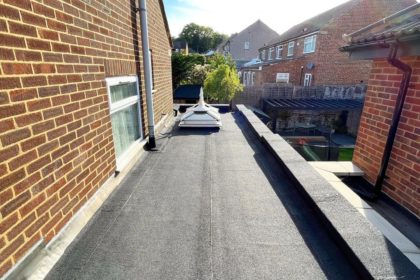 How to Spot Sun Damage on Your Roof Before It Becomes a Problem
How to Spot Sun Damage on Your Roof Before It Becomes a Problem
We’ve already had four official heatwaves this summer. Only a few decades ago, that would have been unprecedented, but summers like this seem likely to be normal in future. While that might be good news for your tan, it creates many problems — not least for your roof.
In fact, even without heatwaves, your roof can be vulnerable throughout the year to UV rays from the sun. Besides the direct effect of UV, the seasonal cycle of heating and cooling, which causes alternate expansion and contraction, can put extra strain on the roofing materials.
So how can you pick out the damage before it becomes a problem?
What Are the Visible Signs of Sun Damage?
- Fading or discolouration — Tiles or slates facing south or west, which are likely to be exposed to the strongest sunlight, may fade more than others. While the fading itself isn’t a problem with anything but the appearance, it may be an early symptom of wear.
- Tiles cracking — Long-term exposure to UV can dry out various roofing materials, such as clay tiles, slate or asphalt. This makes them brittle, which shows up in cracks appearing.
- Warping or curling — The edges can warp or curl on both flat and pitched roofs as a result of exposure to the sun. On a flat roof, this can let the rain in, while on a pitched roof, it can lead to damage to the underlay.
- Granule loss to asphalt — If you have an asphalt roof, UV rays can loosen surface granules. This leads to bare patches, which are more vulnerable to rain or frost.
What Are the Indirect Signs of Sun Damage?
- Moss and lichen — There may be various reasons for moss or lichen growing on your roof, but one is water gathering in the cracks caused by sun damage.
- Temperature changes in the loft space — Good insulation should ensure a fairly constant temperature in the loft space throughout the year. Higher temperatures in the sun could be due to UV damage to either the roofing materials or the insulation.
- Water getting through the roof — If you get water leaking through your roof, especially if there’s only been light rain, this could mean the sun has damaged the waterproofing layers, even if the roof looks fine.
Identify and Repair Sun Damage Early
The best way to pick up sun damage early is to make regular visual inspections of your roof. This should be at least twice a year, ideally in spring and autumn, and you can either look close up or from street level through binoculars.
If you’re still not sure, the best approach is to get a professional roofer to do a survey. This will pick up any issues with elements that are vulnerable to UV damage, such as the seals, flashes and underlay, and it may be possible to stabilise damage to your roof with sealants or coatings.
This is far cheaper than having your roof replaced, which may be necessary if you allow the cracks or brittleness to get worse. Besides preventing water from getting into your home, it can also prevent problems like damp and mould developing.
It’s vital, though, to choose a reliable roofing firm with a good track record of high-quality roof repairs. Get in touch with Empire to find out more about how we can protect your roof against sun damage — and any other issue it might face.









